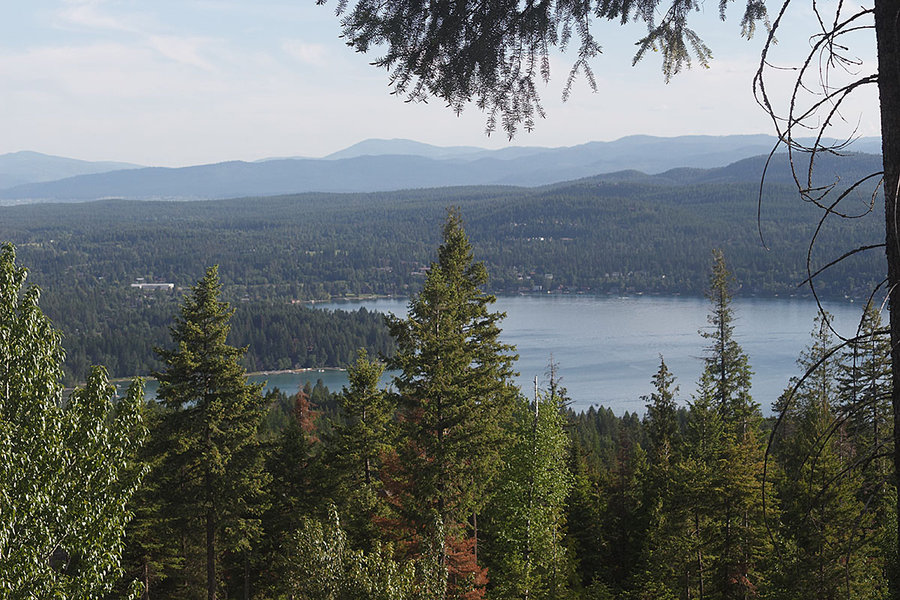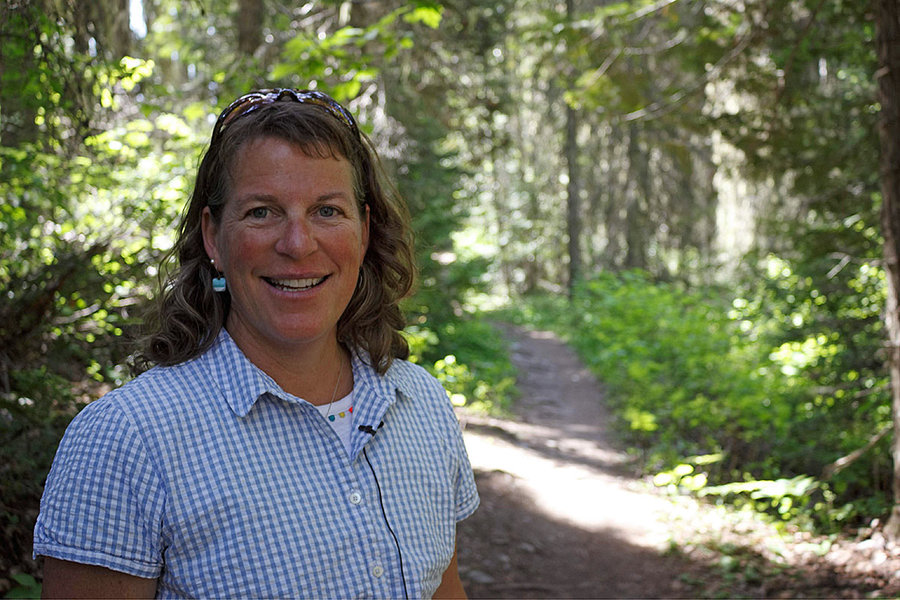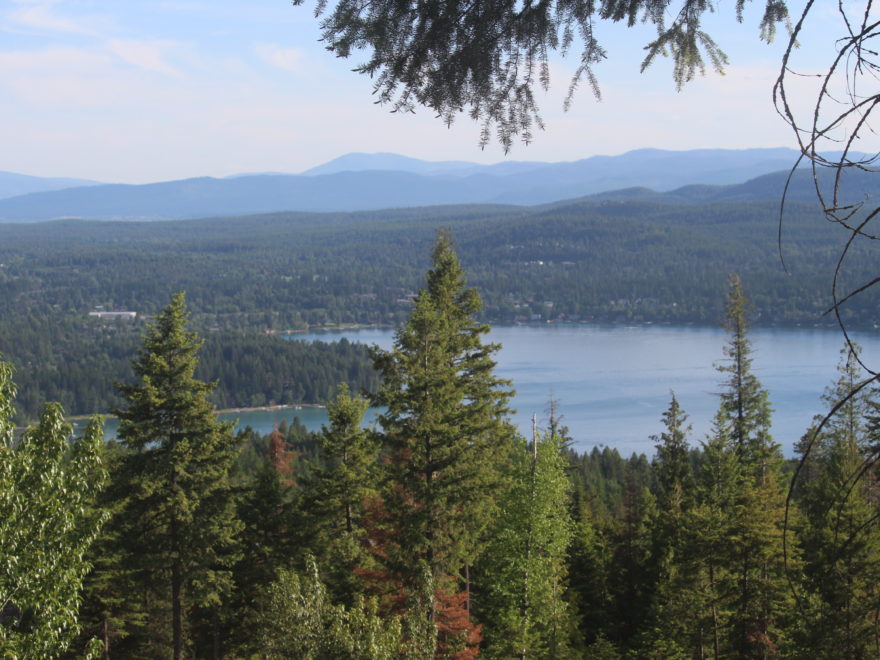
When water demand rises, this Montana town invests in forests
Story appeared at: https://www.csmonitor.com/Environment/2019/0621/When-water-demand-rises-this-Montana-town-invests-in-forests

Photo by Doug Struck Whitefish, Montana, is nestled beside Whitefish Lake in the Rocky Mountains. Access to streams, which gave the town the cleanest and cheapest water, was threatened by development, so the town used an increasingly popular strategy of buying rights to the forest.
June 21, 2019
By Doug Struck Correspondent
WHITEFISH, MONTANA
When the appetite for high-priced housing threatened the water source of this picturesque mountain town, the residents raised taxes and spent money on forests.
Three years later, when rising tourism upped the summer demand for water, more money was raised to buy more forests.
The equation used by local and state officials, nonprofit groups, and private residents was straightforward: It’s cheaper and easier to have the forests cleanse the water than to throw chemicals and machinery at the task.
“Protecting forests of watersheds makes economic sense,” says John Muhlfeld, the mayor of this town of 7,000 nestled in Montana’s Rocky Mountains. “And it’s a much different way of traditionally looking at a public water supply infrastructure.”
Forests to faucets
Whitefish’s embrace of the idea of preserving forests to protect its water supply is evidence of the growing adoption of a tactic that once seemed risky, and is now proving immensely successful for big cities and small towns alike.
As town planners look at the high cost of building water filtration plants and operating them year after year, the thought of letting the trees do it becomes a budgetary no-brainer.
And the trees do it well. The natural filtering process that rain and snow undergo in seeping through forest canopies and forest beds, slowly toward streams and lakes, is so effective that five major cities in the United States – New York, Boston, Seattle, San Francisco, and Portland, Oregon – can pump unfiltered water from distant pristine watersheds to customer homes.
New York is the poster-city example in this country. Twenty years ago, the city engaged in a wrenching political battle over whether to build a $6 billion water filtration plant that would cost $300 million per year to filter water for the city. Instead it gambled and spent $2 billion to protect the forested watershed in the Catskill Mountains, 125 miles away, the source of 90% of the city’s water. It was a bold and controversial decision – and it worked.
“Here we are, 20 years later they have been meeting the safe drinking water standards through tropical storms and superstorms,” says Paul K. Barten, one of the junior architects of the original Catskills program who now chairs a current National Academy review of the system. “It has become an international example of what watershed protection can accomplish.”
“People are not necessarily doing it because they love trees,” he says. “They are doing it because it’s a lot less expensive.” Dr. Barten says he coined the term “forests to faucets” – now used widely for the technique – 15 years ago for a University of Massachusetts Amherst program he heads.

Heidi Van Everen, executive director of the Whitefish Legacy Partners, on the Whitefish trail created on property preserved for the town’s drinking water. The deal appealed to everyone; it was good for water, recreation, wildlife and scenic beauty, she says. Photo by Doug Struck
‘A gentleman’s handshake’
The concept really wasn’t new, Dr. Barten notes. The Swiss in the 1300s “connected the dots: When we cleared the forest above our village, we have avalanches or soil loss that destroys the village. We shouldn’t do it.” Europe widely adopted that conservation ethic – and still today preserves twice as much land, proportionately, as the U.S.
The state and national park programs that began to emerge in the U.S. 150 years ago, and evolved at the prodding of such visionaries as John Muir, Frederick Olmsted, Gifford Pinchot, and Teddy Roosevelt, now preserve 13% of U.S. land, according to the World Bank. Another 56 million acres are held by various forms of private or public “trusts” that allow some use but prohibit development, according to the Land Trust Alliance in Washington, D.C.
In the case of Whitefish, that meant keeping land for logging. The Haskill Basin northeast of town was forestland owned for more than a century by the Stoltze lumber company. The city collected its water from two small streams on the property. Access to the water had always been guaranteed by “no more than a gentleman’s handshake,” says Mayor Muhlfeld.
But over the years, development pressures loomed larger as Whitefish blossomed into a high-end, expensive resort town sprouting multimillion-dollar second homes.
Voting ‘yes’ for water
Stoltze “could have gotten an offer that they couldn’t refuse,” says Kris Tempel, a biologist at the Montana Fish, Wildlife and Parks agency. She and Alan Wood, a resource conservation manager at the agency, had been putting together conservation easements for years, “but we had never done a project this expensive,” says Mr. Wood in his office in Kalispell, where nail holes in the wall are covered by a bear hide. “I didn’t have a lot of confidence we could do it.”
The Trust for Public Land thought they could. The nonprofit helped bring together $9 million from federal conservation funds. And Stoltze agreed to take a $4 million cut on the $21 million price of giving away development rights to its 3,000 acres in Haskill Basin.
“Once lands are developed they are hard to undevelop,” notes Dick Dolan, a director of the Trust for Public Land in Bozeman. “We are trying to get ahead of the curve and preserve for future generations what we have.”
But that left a shortfall of $8 million. City residents had balked before about increasing the town’s “resort tax” on restaurants, lodging, and retail. But in 2015, after a “Vote Yes for Water” campaign by the mayor and others, residents gave an overwhelming 84% approval to a 1% tax increase. Late last year, the purchase of another 13,000-acre property helped protect a watershed for Whitefish Lake, a secondary source of water for the town.
From Stumptown to sustainability
The public support is a change in a place where encroachment on private land is viewed with suspicion, says Mr. Wood.
“Twenty years ago there was a lot of opposition” to these proposals, he says. “People would say, ‘You’re spending money we don’t have to lock up land we need.’”
But this deal “gave everyone what they wanted,” says Mr. Wood. The town kept its access to clean and cheap water. Stoltze can keep harvesting timber on the land, employing an average of 110 workers. Lumber companies had crudely formed Whitefish – its original name was “Stumptown” – but Mr. Wood and others say the selective “sustainable” timbering done by Stoltze is healthy for the forest.
“We’ve been doing it for over 100 years, and we’re able to find the balance,” says Paul McKenzie, land and resource manager for Stoltze.
Just as important, perhaps, was guaranteeing public access to the forests. The deals will help a community group, Whitefish Legacy Partners, create a 55-mile trail around Whitefish. About 42 miles have been built, and already the trail is used about 130,000 times a year by bikers, hikers, and joggers, says Heidi Van Everen, executive director of the group.
“When I moved here 12 years ago, people didn’t want to talk about conservation,” Ms. Van Everen says, as four bikers steer carefully around her on the wooded trail, shaded by towering western red cedars and Douglas firs. “It was too controversial. It was this left-wing crazy stuff.
“People now understand conservation means protecting our scenic backdrop, protecting our drinking water, supporting wildlife, allowing hunting,” she says. “I feel like there is so much more of ‘Let’s find common ground and figure out what we can agree on.’”
